 Backend Development
Backend Development
 PHP Tutorial
PHP Tutorial
 Detailed explanation of examples of implementing verification code replacement and site-wide search functions in phpcms
Detailed explanation of examples of implementing verification code replacement and site-wide search functions in phpcms
Detailed explanation of examples of implementing verification code replacement and site-wide search functions in phpcms
When using phpcms to replace web pages, in addition to normal replacement columns, content pages, etc., there are other verification codes, form submissions, and search functions. These may have some minor issues with some default files when replacing them. Small changes
The following is the process of success in failure, and finally replaced it with a bug-free replacement. This article mainly introduces the verification code replacement of phpcms and the realization of the whole site search function of phpcms. Friends who need it can refer to it. Next, I hope it can help everyone.
1. Verification code replacement for phpcms
Where there is a verification code, it is usually a form. Then you must first make the form. The form production process is very simple, as follows:
A. Make a form
(1) Log in to your own phpcms background management
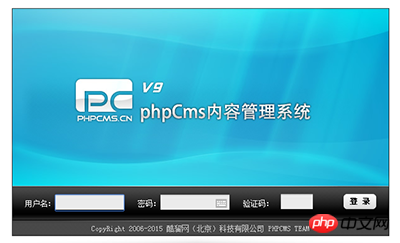
(2) After logging in, follow this step to add the form
a. Module------Form Wizard: As shown in the figure
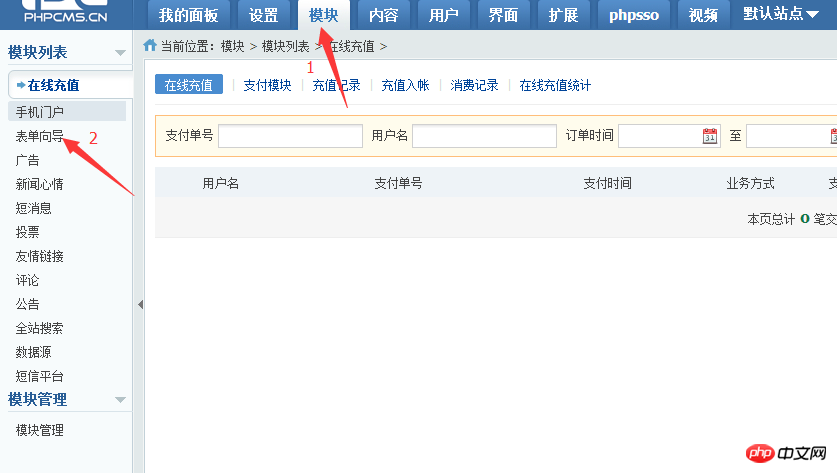
b. After opening the form wizard, click the "Add Form Wizard" button, such as Figure:
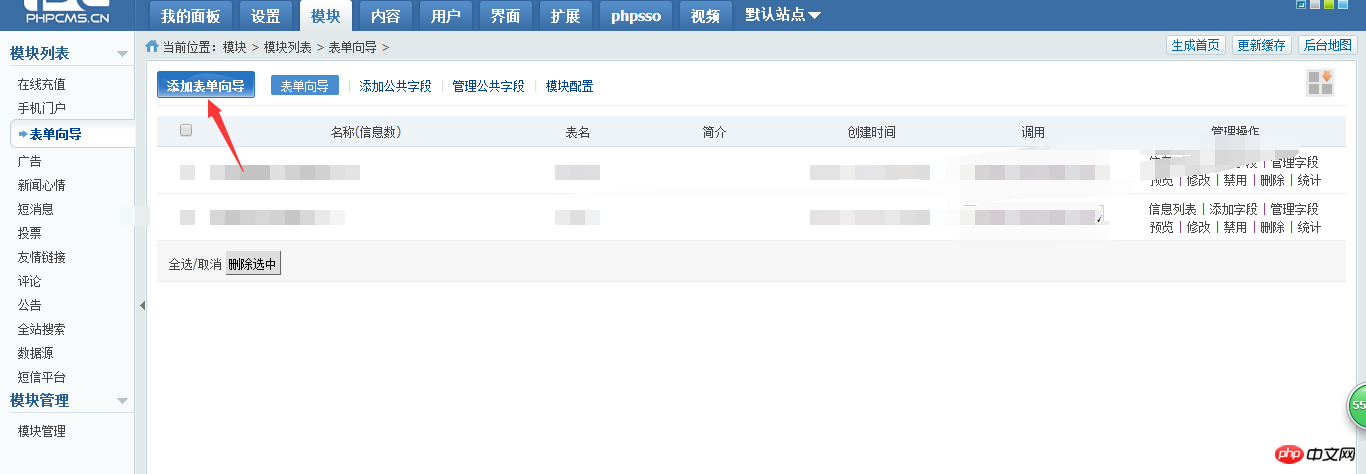
c. Open the dialog box to add information, click OK
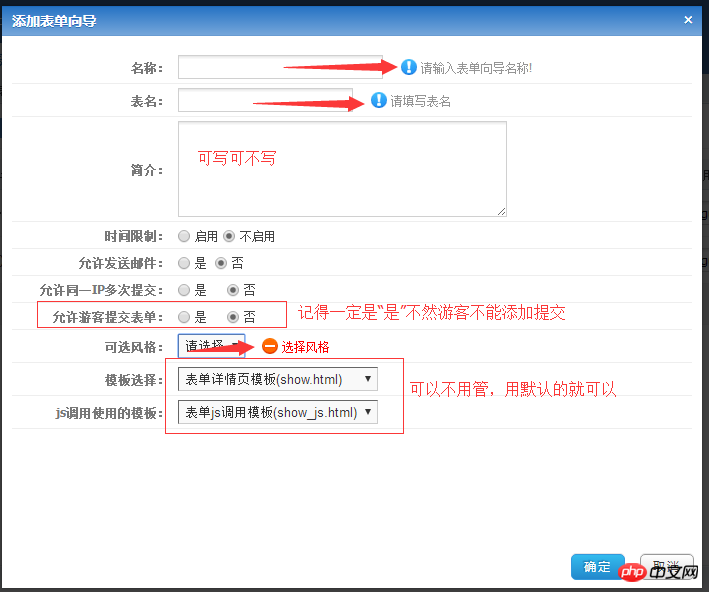
d. After confirmation, the The form you just added appears in this window, as shown in the figure:

(3) Add fields to the form
a. Click on the current page "Add Field" button to open the Add Field window

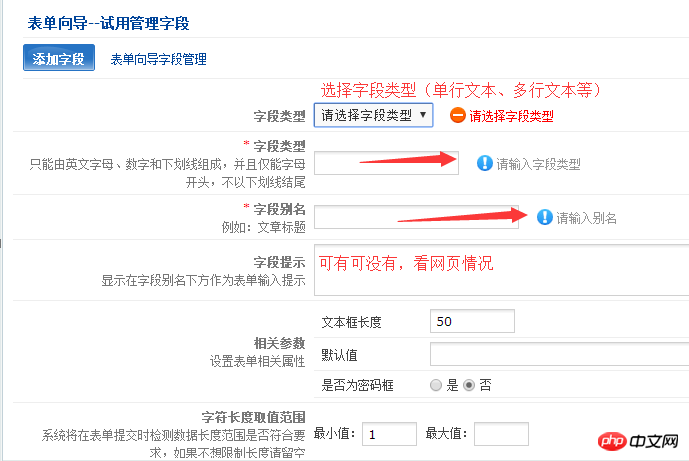


 ## d. Now that the form is there, add the form To the replacement web page, just copy this js sentence, as shown in the picture:
## d. Now that the form is there, add the form To the replacement web page, just copy this js sentence, as shown in the picture:
Copy this sentence to the corresponding position in the web page
 The form is now here, you can see the style of the form and click the "Preview" button
The form is now here, you can see the style of the form and click the "Preview" button
(3) Modify the beginning information of the form
Add to the web page normally After that, such a style will appear, as shown in the picture:
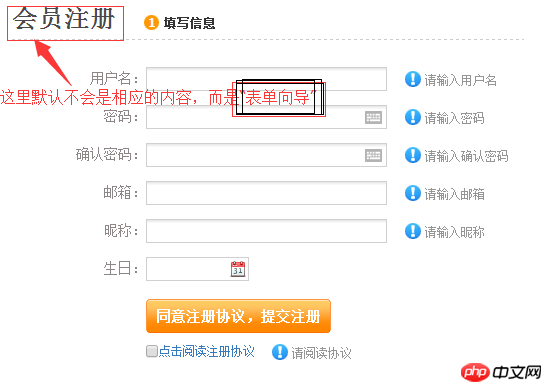 a. Open the default template folder of your phpcms template, as shown in the picture
a. Open the default template folder of your phpcms template, as shown in the picture
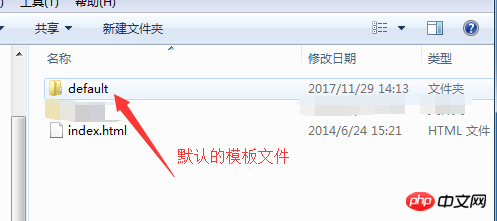 b. Open the default folder, find the "show_js.html" file in the "formguide" folder, and open the file, as shown in the figure:
b. Open the default folder, find the "show_js.html" file in the "formguide" folder, and open the file, as shown in the figure:
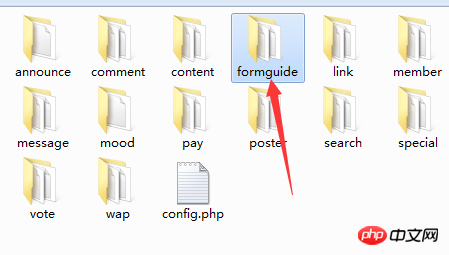
 c. In the open show_js.html file, modify this position, as shown in the figure:
c. In the open show_js.html file, modify this position, as shown in the figure:
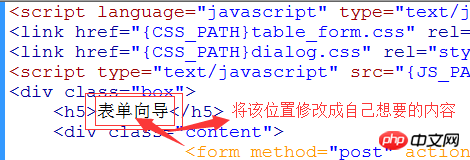 In this case, the form is truly over
In this case, the form is truly over
B. Add verification code to the form
(1) Add a field name "Verification Code", this step is all above, unknown
(2) Similarly in the default folder, find " "show_js.html" file in the "formguide" folder, open the file
Add such a piece of code at this location, as shown in the picture:
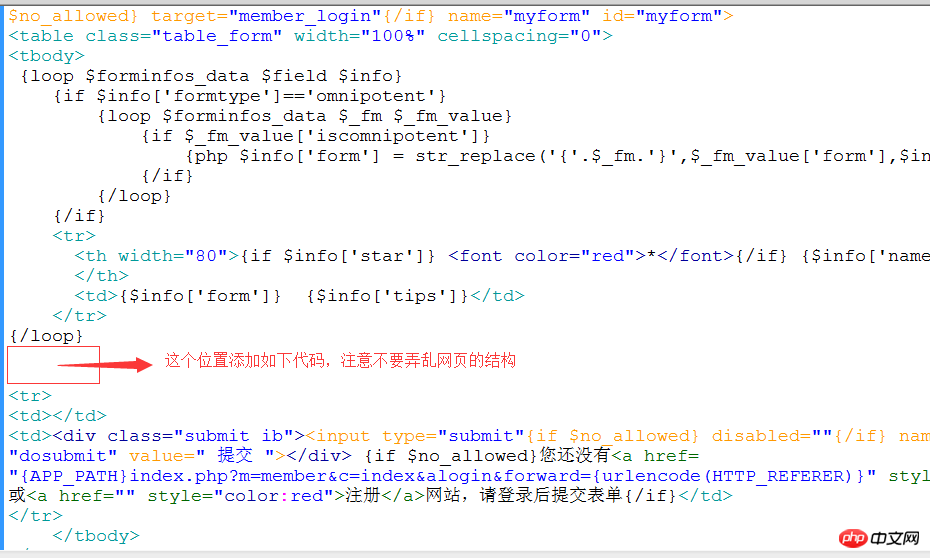 Added The code is as follows:
Added The code is as follows:
(3) After the files in the default template have been modified, there is one more place that needs to be modified, which is to change the index.php file under \modules\formguide, as shown in the figure
If you want to find this folder, it also exists in the phpcms folder
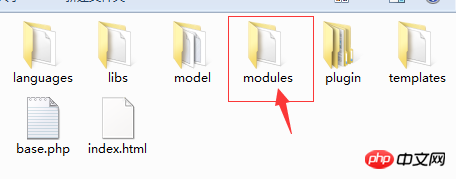

Open the file and add this code. The location of the addition is as shown in the figure:

The added code is as follows:
In this way, the verification code is completed, as shown in the picture:

You can also modify the content of the verification code by clicking on the picture.
Through continuous attempts, this is the complete step to replace the verification code~~~~
If you want to view the form submitted by the user, you can check this place:
On the right side of each form, click "Information List":

#Enter the information list to see who has added the form and what content they submitted, as shown in the figure:

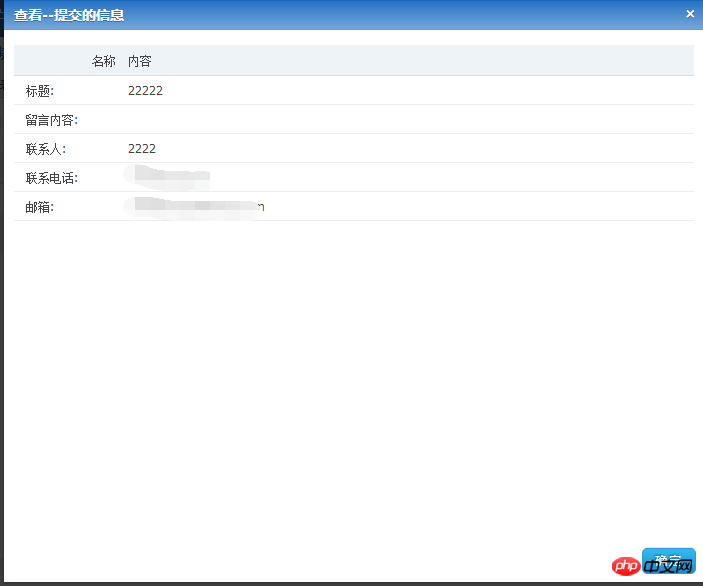
2. phpcms realizes the whole-site search function
The so-called whole-site search function is actually based on the input Search the site for content.
Step one: Submit and write the form on the search page. I won’t go into details about how to write the form.
In this way, the content you want to find is passed into the index.php file for processing (the index.php file is in modules/search/index.php). This php file is to judge the various values passed in above. And processing
As shown in the figure:

Second step: The page returned by this form form
The page that returns the value is not The column page is neither a list page nor a content page, it is an independent file
(1) Create a search folder under your own template: the path is as follows:

It is not created in the content file, but the search folder is created outside it
(2) There are several files in the search folder (remove it on your own return page) Divide)
Split a whole static page into several parts like other pages: header, footer, index, list, etc. 4 page files
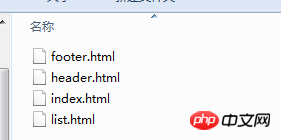
(3) Display of search results
I won’t go into details about splitting. Anyone who knows phpcms will split it. Now it is to modify the index page and list page
index page It is to search for the page returned when there is no content. This page can be set by yourself, or you can use the default page of phpcms. The
list page is the search result page. Please remind: In addition to displaying the search content, other content should not be traversed and displayed on this page, because this will cause the search results to be wrong. Search results will be displayed.
The traversal code for displaying the search results page is as follows: (Put this where you want it to be displayed, and modify the style according to your own style)
Note: You can go into the default template of phpcms to view it How to write the files in the search folder? Note that there are several js files that need to be imported and must be written.
Step 3: Check
Check whether there is any problem with the result page:
(1) Search for products with "Qi" in the site

(2) Check whether the page is out (there should be pagination if there are many things, and the search keywords are highlighted. This is a modification of the style)

The replacement of phpcms's whole site search ends here.
Points to note:
(1) The search folder is a file at the same level as the template content
(2) The files in the search folder also need to be split into "Head, middle, bottom"
(3) Except for the search results, other contents of all the split files cannot have any traversal of the search database
Related recommendations:
Why is phpcms site-wide search not as effective as many people boast?
Brothers PHPCMS basic video tutorial resource sharing
How to build a beautiful PHP verification code class file and how to call it
The above is the detailed content of Detailed explanation of examples of implementing verification code replacement and site-wide search functions in phpcms. For more information, please follow other related articles on the PHP Chinese website!

Hot AI Tools

Undresser.AI Undress
AI-powered app for creating realistic nude photos

AI Clothes Remover
Online AI tool for removing clothes from photos.

Undress AI Tool
Undress images for free

Clothoff.io
AI clothes remover

Video Face Swap
Swap faces in any video effortlessly with our completely free AI face swap tool!

Hot Article

Hot Tools

Notepad++7.3.1
Easy-to-use and free code editor

SublimeText3 Chinese version
Chinese version, very easy to use

Zend Studio 13.0.1
Powerful PHP integrated development environment

Dreamweaver CS6
Visual web development tools

SublimeText3 Mac version
God-level code editing software (SublimeText3)

Hot Topics
 1664
1664
 14
14
 1423
1423
 52
52
 1321
1321
 25
25
 1269
1269
 29
29
 1249
1249
 24
24
 PHP and Python: Comparing Two Popular Programming Languages
Apr 14, 2025 am 12:13 AM
PHP and Python: Comparing Two Popular Programming Languages
Apr 14, 2025 am 12:13 AM
PHP and Python each have their own advantages, and choose according to project requirements. 1.PHP is suitable for web development, especially for rapid development and maintenance of websites. 2. Python is suitable for data science, machine learning and artificial intelligence, with concise syntax and suitable for beginners.
 PHP in Action: Real-World Examples and Applications
Apr 14, 2025 am 12:19 AM
PHP in Action: Real-World Examples and Applications
Apr 14, 2025 am 12:19 AM
PHP is widely used in e-commerce, content management systems and API development. 1) E-commerce: used for shopping cart function and payment processing. 2) Content management system: used for dynamic content generation and user management. 3) API development: used for RESTful API development and API security. Through performance optimization and best practices, the efficiency and maintainability of PHP applications are improved.
 PHP: A Key Language for Web Development
Apr 13, 2025 am 12:08 AM
PHP: A Key Language for Web Development
Apr 13, 2025 am 12:08 AM
PHP is a scripting language widely used on the server side, especially suitable for web development. 1.PHP can embed HTML, process HTTP requests and responses, and supports a variety of databases. 2.PHP is used to generate dynamic web content, process form data, access databases, etc., with strong community support and open source resources. 3. PHP is an interpreted language, and the execution process includes lexical analysis, grammatical analysis, compilation and execution. 4.PHP can be combined with MySQL for advanced applications such as user registration systems. 5. When debugging PHP, you can use functions such as error_reporting() and var_dump(). 6. Optimize PHP code to use caching mechanisms, optimize database queries and use built-in functions. 7
 The Enduring Relevance of PHP: Is It Still Alive?
Apr 14, 2025 am 12:12 AM
The Enduring Relevance of PHP: Is It Still Alive?
Apr 14, 2025 am 12:12 AM
PHP is still dynamic and still occupies an important position in the field of modern programming. 1) PHP's simplicity and powerful community support make it widely used in web development; 2) Its flexibility and stability make it outstanding in handling web forms, database operations and file processing; 3) PHP is constantly evolving and optimizing, suitable for beginners and experienced developers.
 PHP vs. Python: Understanding the Differences
Apr 11, 2025 am 12:15 AM
PHP vs. Python: Understanding the Differences
Apr 11, 2025 am 12:15 AM
PHP and Python each have their own advantages, and the choice should be based on project requirements. 1.PHP is suitable for web development, with simple syntax and high execution efficiency. 2. Python is suitable for data science and machine learning, with concise syntax and rich libraries.
 PHP and Python: Code Examples and Comparison
Apr 15, 2025 am 12:07 AM
PHP and Python: Code Examples and Comparison
Apr 15, 2025 am 12:07 AM
PHP and Python have their own advantages and disadvantages, and the choice depends on project needs and personal preferences. 1.PHP is suitable for rapid development and maintenance of large-scale web applications. 2. Python dominates the field of data science and machine learning.
 PHP vs. Other Languages: A Comparison
Apr 13, 2025 am 12:19 AM
PHP vs. Other Languages: A Comparison
Apr 13, 2025 am 12:19 AM
PHP is suitable for web development, especially in rapid development and processing dynamic content, but is not good at data science and enterprise-level applications. Compared with Python, PHP has more advantages in web development, but is not as good as Python in the field of data science; compared with Java, PHP performs worse in enterprise-level applications, but is more flexible in web development; compared with JavaScript, PHP is more concise in back-end development, but is not as good as JavaScript in front-end development.
 PHP and Python: Different Paradigms Explained
Apr 18, 2025 am 12:26 AM
PHP and Python: Different Paradigms Explained
Apr 18, 2025 am 12:26 AM
PHP is mainly procedural programming, but also supports object-oriented programming (OOP); Python supports a variety of paradigms, including OOP, functional and procedural programming. PHP is suitable for web development, and Python is suitable for a variety of applications such as data analysis and machine learning.



